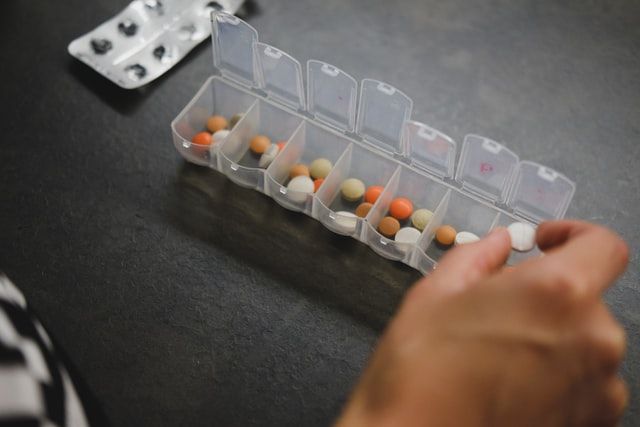Each one of us has dealt with anxiety and depression at one time or another. However, the acid test is; when is the anxiety containable and when does it become something that grips you and obstructs regular healthy functioning. When does it never abate, continuously “spiking” leaving you frightened, uncertain and hopeless.
Norwegian artist Edvard Munch’s famous painting The Scream, is a telling illustration of this feeling.

We are indeed passing through unprecedented times. That the world is in ‘Shut Down’ mode is something beyond living memory.
The novel coronavirus is a microscopic enemy that attacks the human body causing macro havoc. It has raised anxiety and depression levels all over the world, spiked by continuous news of its deadly contagion. The virus, itself not being a living thing, has this mechanism called spikes over its surface – the corona. It also has a membrane protein and an envelope protein, both of which can be dissolved by soap suds, thereby disintegrating the virus. Hence the preventive measure of washing our hands thoroughly. The spikes, hook into a receptor cell in the human body. It then binds and fuses with the membrane of the receptor cell, taking over the function of the host cell, to replicate and multiply itself.
This seems to me so similar to the way anxiety enters and takes over our minds. We all have early unresolved anxieties which – if life has been kind to us and we have had a fairly stable and supportive environment/parenting – remain asleep and inactive. However, when some untoward event like this pandemic occurs, it can spike onto dormant anxieties and take over the mind, flooding it and multiplying it, both in magnitude, as well as spreading itself to other non-affected areas. However, the problem arises when we are unable to differentiate the real from the imagined. And even if we are conscious of the differentiation, we cannot stop it and are helpless in the grip of its fear.
The present situation leaves all of us in fear of this invisible, invidious and hostile microorganism. It can come from anywhere and from anybody. This is often the case with anxiety. At its very base, it threatens either our own lives/well-being or that of the ones we love and matter to us. The world as we know it, changes. It makes for deep insecurities across the board, in many ways for all, young and old. For many, the anxiety and depression that the mind will not allow itself to know, will be expressed through the body with physical symptoms. The line between the physical and the psychical will be blurred; what the mind cannot bear to think will be expressed in bodily symptoms.
The anxiety may take on various forms; conflicts with close relations or other people; frustration with the situation, may be vented in some other place, lethargy and an inability to move forward; feeling depressed and immobile; putting once amiable and compatible relations at risk. It also creates great diffidence with a changing and uncertain future and overwhelms us with feelings of helplessness and despair overcoming hope, impeding any positive actions we might need to take. The Lockdown has increased fears of isolation, and unreachability.
Throughout life, we give up one thing in order to move on to the other. This is the given order of things. Change will and does happen. Our mental and physical health depends on this adaptability. We need to break this ‘membrane’ and ‘envelope’ of this anxiety of loss, in order to dismantle it and keep our minds safe from its invasion. Psychoanalytic therapy is a great help in being able to sift our own anxieties and place them where they belong. It helps us to understand thoughts and feelings deep within ourselves and to correlate what belongs inside and what is outside. Also to know that we are not alone.
In these times, just as all of us are taking measures to protect and strengthen our bodies, we should also be aware and take measures of protecting and strengthening our minds. We need to have an open spirit of enquiry and rational thinking and not allow it to be spiked by panic. Should you feel stressed, anxious or depressed, seek the assistance of those that have the willingness, capacity and knowledge to help you. To seek help and admit you need help is a Strength of reality thinking and not a Weakness.
 Minnie Dastur is Senior Training Analyst (Adult & Child) at the Psychoanalytic Therapy and Research Centre (PTRC), a premier training institute for child and adult therapy. She is a member of the Tavistock Society of Psychotherapists. As a member of the China Committee of the International Psychoanalytic Association, she has conducted teaching workshops in Wuhan, Beijing and Shanghai for Chinese psychoanalytic candidates on Body-Mind-Body psychic functioning, Countertransference and the work of Wilfred Bion.
Minnie Dastur is Senior Training Analyst (Adult & Child) at the Psychoanalytic Therapy and Research Centre (PTRC), a premier training institute for child and adult therapy. She is a member of the Tavistock Society of Psychotherapists. As a member of the China Committee of the International Psychoanalytic Association, she has conducted teaching workshops in Wuhan, Beijing and Shanghai for Chinese psychoanalytic candidates on Body-Mind-Body psychic functioning, Countertransference and the work of Wilfred Bion.
Views of the author are personal and do not necessarily represent the website’s views.
Thank you for reading the column. Please drop a line and help us do better.
Regards,
The CSR Journal Team












